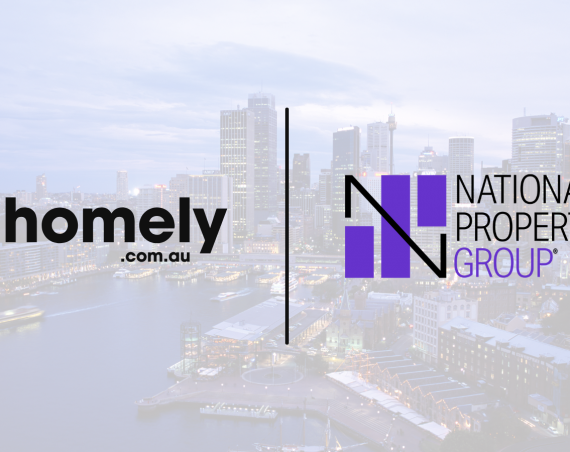Much has been written about newspapers and their demise. We have all read stories of how newspapers are bleeding all over the world and in cases like the Los Angeles Times (and The Chicago Tribune) filing for bankruptcy in the United States, not to mention that our own traditionally profitable newspapers are slowly losing profits and revenues.

Change
However, Rupert Murdoch had gone on the offensive and has spoken of the possibility of newspapers charging for access to online content, he has also flagged the possibility that newspapers could be delivered only in digital within 10 years.
In the last few weeks the heavyweights of the newsprint world gathered in Chicago to come together to launch a group offensive against free content.
Today newspapers only push a certain amount of information directly to their websites and hold back on unique investigative information and journalism until after it has appeared in the print versions, I can understand this, but it is not sustainable.
Newspapers have to return to their roots to survive, they have to understand that the reason the majority of people read their content, is because it is unique not because we want to hear a, (we can get that anywhere).
Organisations like Fairfax and News Ltd over the past 20 years have invested more in sales and marketing and less in investigative journalism and this will end with the digital newspaper revolution.
Skepticism
Newspapers believe people will pay for this content but I am skeptical for a number of reasons. The first being that newspapers have invested less and less over the years in investigative journalism and more and more in marketing and sales. Secondly the classifieds have been bleeding to death because online just kills it in so many ways (content, days on market, accessability). This has been one of many factors in the demise of print and many newspapers have just resorted to tacky journalism trying to reach a younger audience whilst alienating their base.
Light
However, there is some light at the end of the tunnel. The Kindle device has proven that even an ugly little black and white wireless reading device can be popular and profitable. All it needs is for a company to enhance this offering and take it to another level (cue Apple and its touted color reader) and we have something that all newspapers need – a vibrant competitive wireless newsreader market.
Real Estate
This is your digital newspapers, so digital newspapers will allow agents to deliver targeted listings with branding, digital newspapers will give you a canvass to work with and allow you to brand your agency around your listings (you hope), unlike traditional newspapers – digital newspapers will allow you to carry a wealth of property information and local sales data alongside those listings.
Subscriptions
So why would we pay for this? You still buy magazines don’t you? Wireless Readers will demolish the gossip/celebrity magazine industry but it will revive the newspaper/unique content industry because we WILL pay for this – but only to a level.
Wireless Readers will be thin, light, color and black and white and have 6 – 10 hours battery life, they will serve a number of purposes but digital newspapers/ebooks, email, web will be the primary market.
The price? $9 a month? That’s about the money, it is all about volume – and newspapers will actually see a revival and in the cases of companies with quality journalists, a good news reputation and content like Fairfax (Sydney Morning Herald – The Age) will thrive, whereas papers like the Telegraph and the Herald Sun will stick to the print versions longer and die a slow death (blue collar)
Fairfax will eat News Limited in Australia for breakfast for another reason, classifieds. News Limited pretty much owns the tacky side of print in Australia and only has one newspaper it can be editorially proud of, The Australian. As for online classifieds, it has realestate.com.au and even that has a limited shelf life given its damaged reputation amongst the industry and agents.
Summing Up
The future of digital newspapers will be all about journalism and content as we can get all the other stuff elsewhere. It has to be about what made it successful in the first place- quality journalism – quality investigations, matched with quality content.
Throw in online classifieds and a brilliant interface and you have a winner. I pay for content today (software design website) , but they only own me only as long as the provide quality unique content ($7 per month).
So sit back and enjoy your newspaper with your coffee because it is nearing its end. No? You might think this, but just imagine if print newspapers lost just 10% of its readers to digital, now think about the fact they are already bleeding $ on print as of todays readership. Now you see it 🙂
It may take 5 – 7 years but it is coming! Your thoughts?




6 Comments
Brett Clements
Independent, investigative reporting is needed for a democracy to thrive. Great journalism comes from great journalists. The delivery platforms will change and diversify, as has the phone, to the fax, to the mobile. But without the journalists, that’s just hardware. Its about journalism not pulping trees.
Greg Vincent
Great article Peter.
To look at the future of print, one of the greatest examples of how print has had to adapt to change over the past few years can been seen via the huge increase in On-Demand printing of books.
People can get a one-off or out-of-print book individually printed. There’s no need for warehouses of books kept in storage, etc.
But, because people don’t want to wait for Amazon, etc to post out the On-Demand books, one of the book suppliers has decided to instal a printing press within their store. They are calling it an ATM for books. http://www.npr.org/templates/story/story.php?storyId=104644575
This got me thinking. I wonder if On-Demand printing could become the future of newspapers? Potentially, it could be set up like an RSS feed but in print. You could select the topics & journalists that you are interested in reading.
The newsagent could become an ATM for newspapers & print off your very own customised newspaper with only the news that you are interested in reading.
The paper boy would blow his whistle while wheeling around a little ink-jet printer. hehehe 🙂
I know this sounds far fetched at the moment, but a couple of years ago who’d have thought that a book store would have it’s own in-store printing press?
Kylie Emans
In response to Peter Ricci’s blog ‘Internet + Journalism will save newspapers?’, and the ongoing print media vs online media debate…
I will start with where Peter Ricci ends, it is so nice to sit with a cappuccino and read the paper on a Sunday morning but that is about the only time that most people have time to do this. It is much more convenient to check the latest news on the internet on the office computer or on the Blackberry, or if like me you are a real estate agent making use of time while you are waiting for clients to turn up at a property inspection. I totally agree with Peter though, newspapers are trying to hold back on the unique and interesting articles, and in particular investigative journalism. It is a much poorer society when the public doesn
Glenn Batten
We took delivery of a eBook eReader a couple of weeks ago and I have to say this is the future. Modern eBook readers use a different technology called e-ink which simulates the printed page perfectly. There is no backlighting involved that gave people headaches of the initial eReaders.
At the moment e-Readers are primarily “novel” sized which is great for reading novels but would be too small for newspapers, magazines etc. In the past few months there has been A4 sized eReaders released including the Kindle DX which is aimed squarely at textbooks, newspapers and magazines. Amazon is even doing trials at some universities providing students with their all their textbooks in one simple eReader that would be about 1/5th of the size of just one textbook.
Novels only require black and white (actually it is greyscale) which is why they are the primary use so far but the last hurdle before mass takeup has just been overcome. In the last couple of weeks a colour e-ink reader has been released. This allows perfect representation of magazines, newspapers, comics, textbooks etc etc.
One of the huge features of the Kindle that made it so popular was its free wireless delivery. You could wake up every morning and your morning papers would be their waiting for you on your bedside table at only a fraction of the cost of a printed version. You dont even have to go out on a chilly winters morning and get them off the wet lawn. Wireless connections either through wifi or through mobile broadband are slowly becoming the norm.
eReaders with e-ink technology will be the future but int he case of novels and newspapers there is only one hurdle still to overcome and thats greed. You would think that they would have learnt from the lessons that the music industry got belt into them and the movie studios are currently fighting. Trying to hold onto old income streams in a digital environment is not going to work. But as the music industry has found out, if you embrace technology and price accordingly there is still massive amounts still to be made and business can continue as normal. Hollywood are slowly getting this belted into them as they see movie piracy running rampant. If they price digital downloads correctly and keep quality high then the masses would be prepared to pay for that rather than downloading an illegal and sometimes average quality versions.
Amazon at the moment are dramatically subsidising digital versions of books to Kindle owners. Kindle versions of the latest best sellers can be had for under half the printed price. Book publishers are up in arms over the tactic claiming that Amazon are trying to build up market share of the digital future so they can hold the industry to ransom and demand lower prices. These publishers claim that it only costs $3 or $4 to print a book and therefore that is the only discount they are prepared to give when selling ebooks. This means that in other eBook formats prices are much closer to the print variant and is why there is an ever increasing trade in pirated versions yet you cannot find a pirated Kindle copies anywhere and they are the number one eReader in the world, even though they are only sold in the US.
For my mind, Amazon are the ones who have got it right. They understand what it is going to take for digital delivery to work and they are just doing it inspite of the publishing industry who they are going to take kicking and screaming into the future. what the publishers dont understand is that if they dont embrace the situation authors might just go direct to Amazon and bypass publishers all together. Amazon could create print versions and digital versions for sale directly.
But what about newspapers? At the moment digital newspapers are available at various different price levels around the world ranging from full price to about half price. Newspapers on the Kindle are available at around half the newsstand price which is probably quite fair considering they are sans advertisements. For a newspaper if you consider the price covers printing and distribution and advertising revenues cover the other costs and profits it should stand to reason that if newspapers could deliver full replicas of the print version with all ads in place then the price should be free. In fact, a newspaper could offer two versions, one with ads for free, or one without for a subsciption price.
To do this large colour e-reader technology needs to become the norm which is still going to be a while off. Another hurdle I believe is that traditional circulation counts are only for print versions so for newspapers to justify revenues to advertisers the official circulation figures will need to include digital versions as well.
For my mind reading newspapers and magazines on computers screens, pda’s, phones blackberry’s will never take off. Either they are not portable or the screens are way too small. E-readers on that hand could hold all your magazine subscripitions, your newspaper subscriptions and thousands of novels in something portable yet with a big enough screen to still read large format items comfortably.
We are still a little way off from this scenario but its coming. Check this article out :- http://bit.ly/XuzT0
Whats interesting about the article is that the research company quoted admits they got the whole issue wrong in an earlier report that stated the Kindle would only attract a small number of book-loving early adopters. Each release now sells out in a matter of hours.
eReaders are going to explode as more features are added. Since I imported ours for my partners birthday present several people have fallen in love with the concept and ordered their own.
Of course one of the real indicators that ebooks will be a success is Google has entered the market and is positioning itself to take on Amazon.
http://bit.ly/kZd20 and http://bit.ly/Y5keE
Publishing companies and Newspapers can either get on board, or get trampled in the rush. Their choice.
Elders
Try http://www.engadget.com/tag/crunchPad/
Glenn Batten
The crunchpad is really just an internet tablet which is another gadget entirely.
Modern eBooks use the e-ink technology. Because of the higher current draw of backlit screens internet tablets work like laptops and have a very limited power cycle… from 1 to 4 hours.
In comparison e-ink technology only uses power when it is changing page and current versions can do over 7000 page turns before they need charging. Big big difference.
There is a large format colour eReader though just being released through fujitsu. http://bit.ly/7035M. The issues with it are price and an 8 second page turn… but as the tech matures so will its issues.